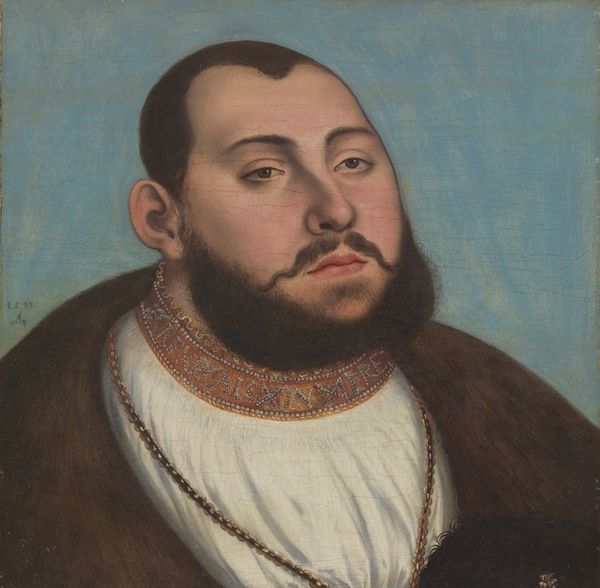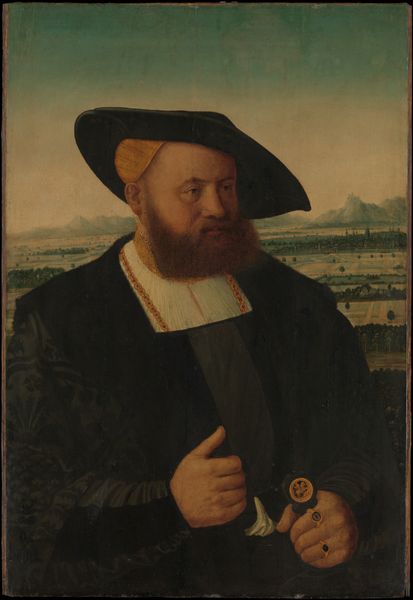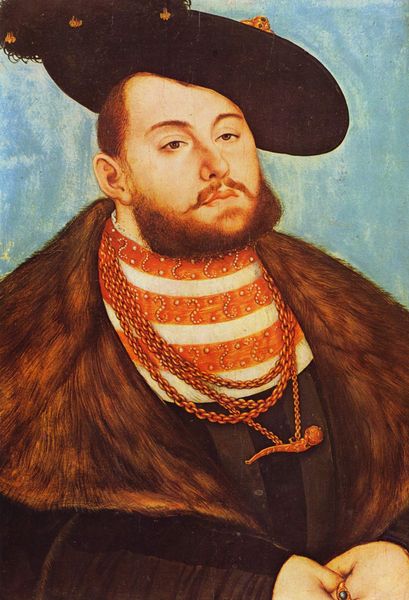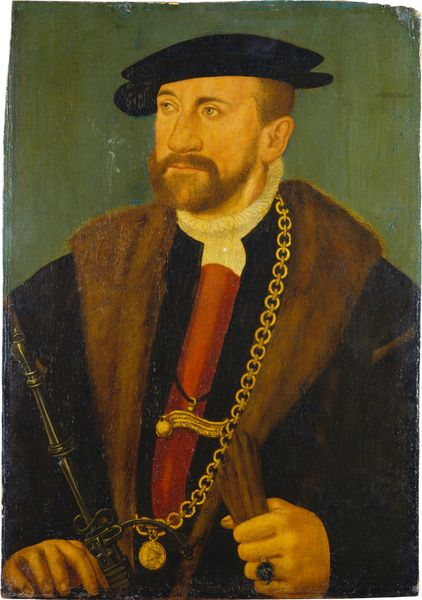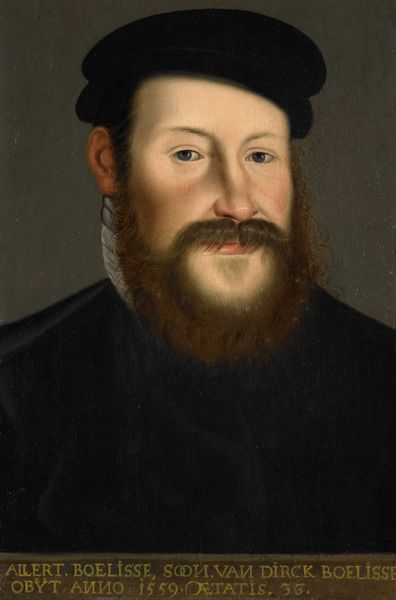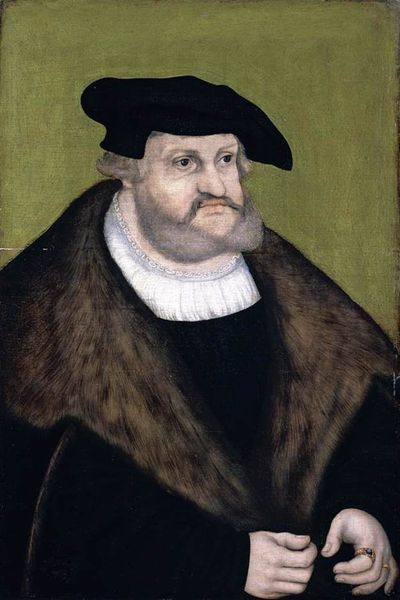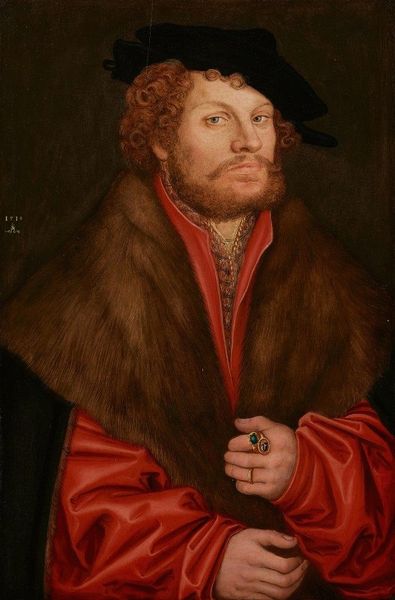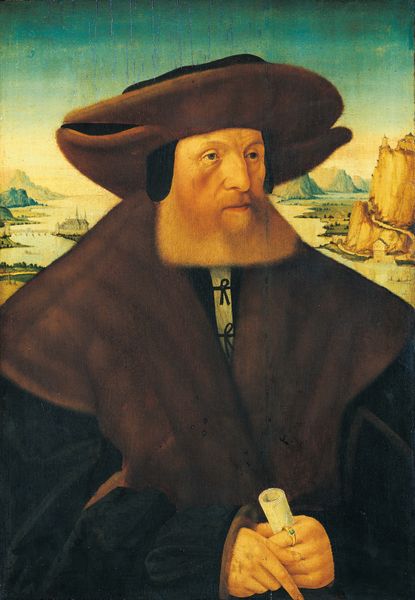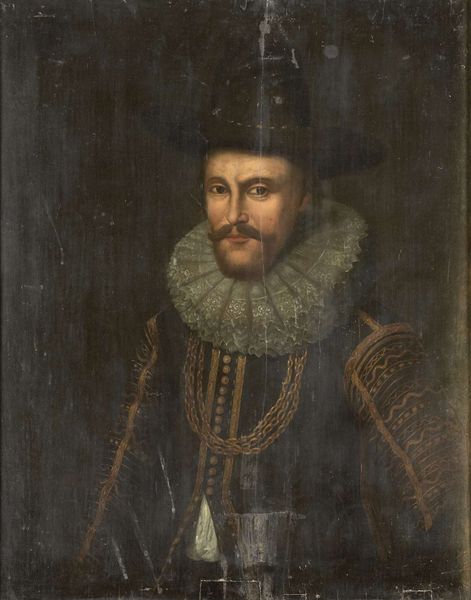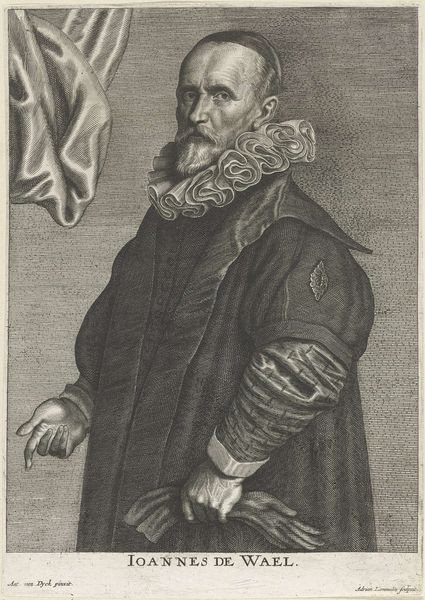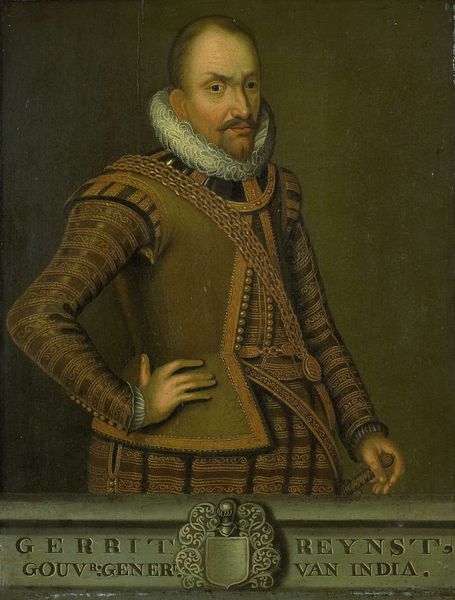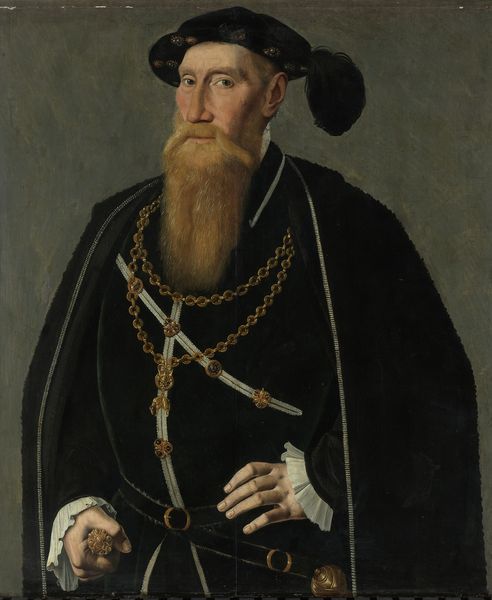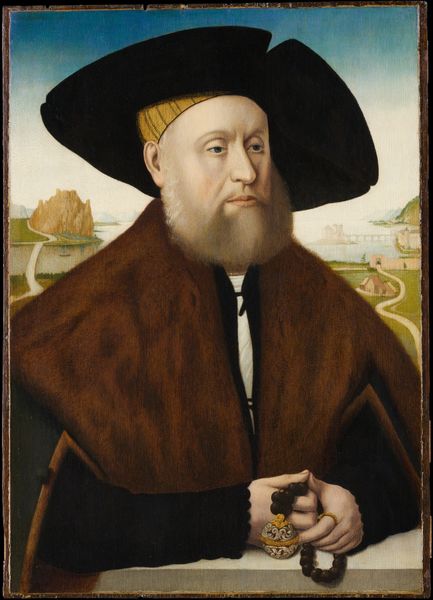
painting, oil-paint
#
portrait
#
figurative
#
painting
#
oil-paint
#
figuration
#
northern-renaissance
#
early-renaissance
Copyright: Public Domain: Artvee
Editor: Here we have Lucas Cranach the Elder's "Lukas Spielhausen," painted in 1532. It's an oil painting. There's such an intensity to the sitter's gaze! What strikes you most about this piece? Curator: It's all about the details isn’t it? The rendering of those luxurious fabrics! And the glint of the rings on his fingers… Cranach, in portraying Spielhausen, shows us a lot about the man’s wealth, and thus the materials available in that society and his position. Look closely, how do the materials themselves inform you? Editor: That's a good point. The richness of the clothing speaks volumes about the social and economic structures of the time. The dark fabric contrasts starkly with his skin and almost seems to envelop him... How did these production constraints impact the way that the artist worked and that wealthy people could represent their position? Curator: Exactly! This wasn’t simply a case of "choosing" materials. There was the labour in extraction, trade, dyeing – the entire network of skilled work embedded in these possessions. Oil paint allowed for an incredible rendering of detail; consider the cost of this and that’s precisely the point. Someone of the lower orders would certainly not be able to hire the artist! Do you think the style affected its accessibility? Editor: That’s so true! It does bring a whole new appreciation to the image and helps see past just the surface representation. I hadn’t considered the relationship between material wealth and social standing being translated by Cranach! Curator: Considering the role that the creation of art and materials play provides insight into these dynamics; it changes the narrative, don't you agree? Editor: I definitely see the painting from a fresh angle now, and appreciate its nuances. Thanks so much!
Comments
No comments
Be the first to comment and join the conversation on the ultimate creative platform.
